 Lately I've been reading several papers about the identification of eastern Herring Gull assemblage, especially in Japan and Korea. I found it interesting so I decided to take a look through all of my gulls images I have taken around Japan. All photos in this entry were taken on February 23 this year at Oita-kawa(Oita River) in Oita. I scanned through every pic and realized that there are so many interesting variations that I have overlooked. The photo above is a pure flock of common Black-headed Gull(Larus ridibundus) resting on the river bank.
Lately I've been reading several papers about the identification of eastern Herring Gull assemblage, especially in Japan and Korea. I found it interesting so I decided to take a look through all of my gulls images I have taken around Japan. All photos in this entry were taken on February 23 this year at Oita-kawa(Oita River) in Oita. I scanned through every pic and realized that there are so many interesting variations that I have overlooked. The photo above is a pure flock of common Black-headed Gull(Larus ridibundus) resting on the river bank.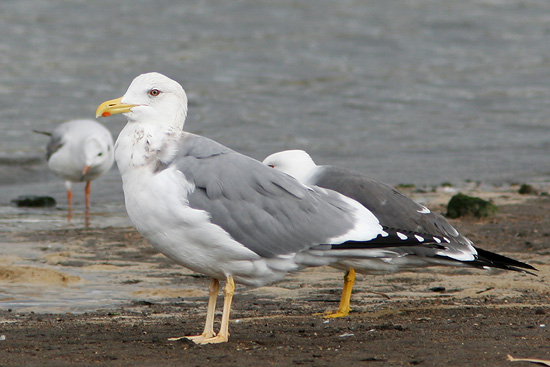

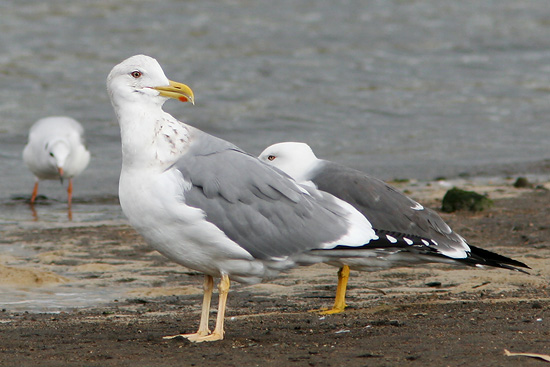 T1 individual; note its large bill, medium yellowish-pink legs
T1 individual; note its large bill, medium yellowish-pink legs T2(behind the 1cy Black-tailed Gull); note its rich pinkish-orange legs
T2(behind the 1cy Black-tailed Gull); note its rich pinkish-orange legsand finer streaks on head and neck comparing to L.vegae(left)
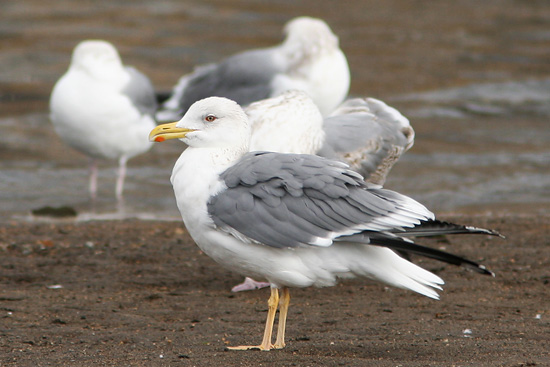

T3 with 2cy and adult L.vegae(back), breeding Black-tailed(right)
and 2cy Kamchatka(Common) Gull(far right)
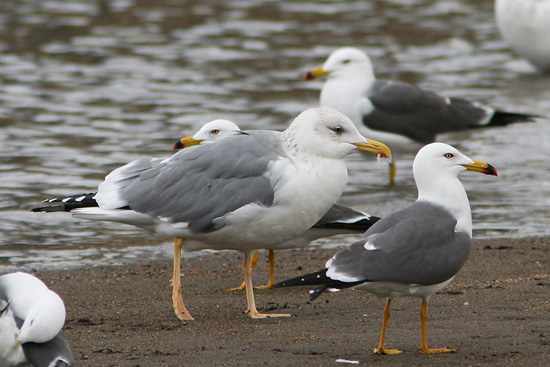
T3; note very fine streakings, long primary projection,
slightly dark back and pale orange-pink legs
The photo of T2 with L.vegae very well indicates the difference of brownish streaking on head and nape of L.vegae and taimyrensis. It has the richest pinkish-orange legs of all taimyrensis individuals I found that day. The mantle interestingly seems to be a little paler than L.vegae but the compact head and body structure fit it more into taimyrensis type rather than L.v.birulai. T3 has slightly darker shade of grey on upperparts than L.vegae. It has medium yellowish-pink legs, a bit oranger than T1. It seems to be more than halfway molting into breeding plumage; very fine brownish streaks restricted only to crown, cheek and nape, with deep yellow bill.


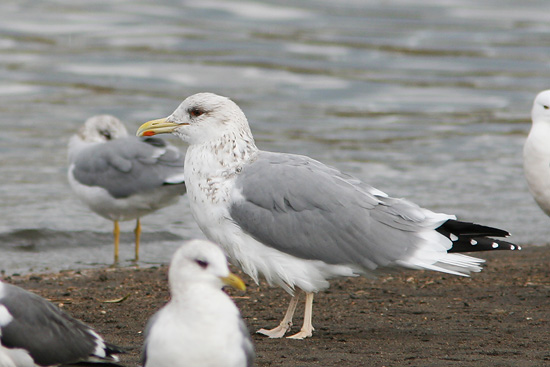 This bird is very odd-looking. It has strangly short-legged appearance with short primary projection (its P10 is still growing), giving it a very unusual heavy-headed feeling. The legs are not yellowish but also not true pink. The bill is pale yellow and very well-paralleled, i.e. the gonys angle is not obvious. Its mantle also looks paler than normal L.vegae. Could it be a birulai?
This bird is very odd-looking. It has strangly short-legged appearance with short primary projection (its P10 is still growing), giving it a very unusual heavy-headed feeling. The legs are not yellowish but also not true pink. The bill is pale yellow and very well-paralleled, i.e. the gonys angle is not obvious. Its mantle also looks paler than normal L.vegae. Could it be a birulai?

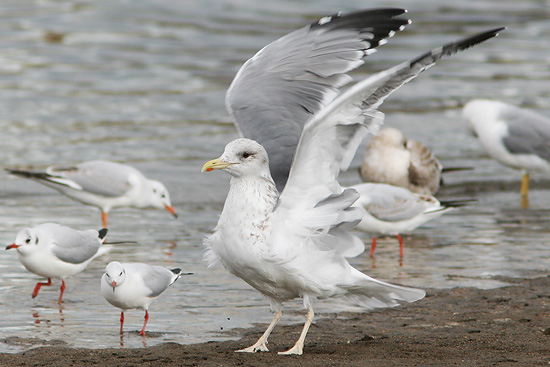
Its P10 is still very short; strange for normal L.vegae at this time of year(?)
with black on 7 primaries, i.e. from P10-P4
Vega Gulls were quite vary in plumage. Some birds tend to possess much of a breeding plumage, while others still having dense brownish streaks on head and neck. Strangely, many of them have blackish mark on lower mandible, some even on both mandibles. No taimyrensis type found having this kind of black pattern on the bill.

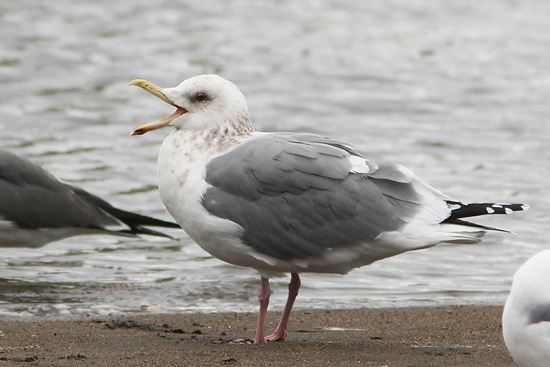
This L.vegae has black spot on its lower mandible;
note brown spots on breast-sides, short primary projection
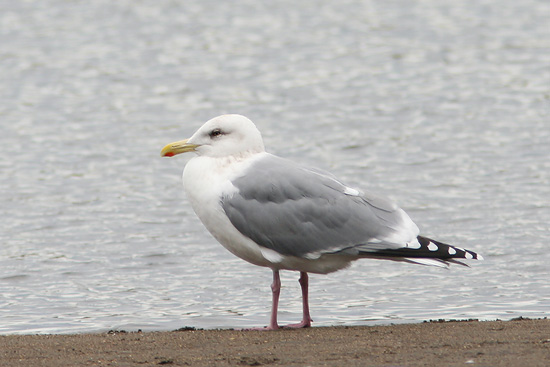

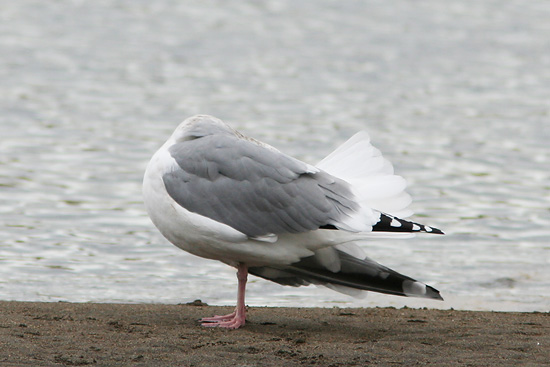
Its mirror and wingtip on P10 are completely merged
This bird has the whitest head among all L.vegae. Its bill and head structure also look longish with quite a long-legged impression. Don't know if it's just an almost breeding L.vegae or a typical winter L.mongolicus. Its structure can be seen more clearly in silhouette.
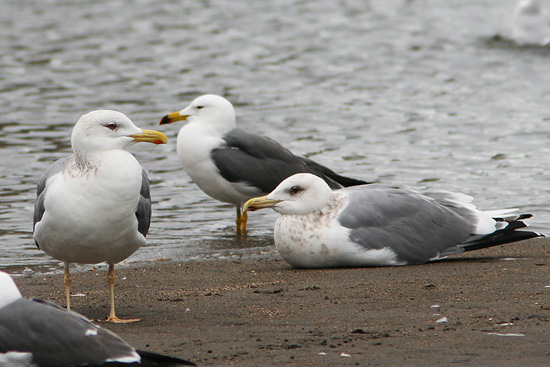
T4(left) with a Vega Gull and Black-tailed Gull(right)
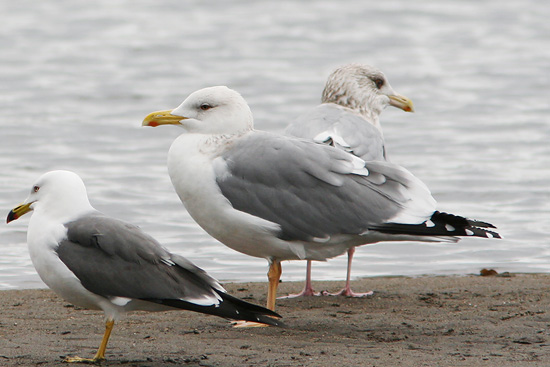
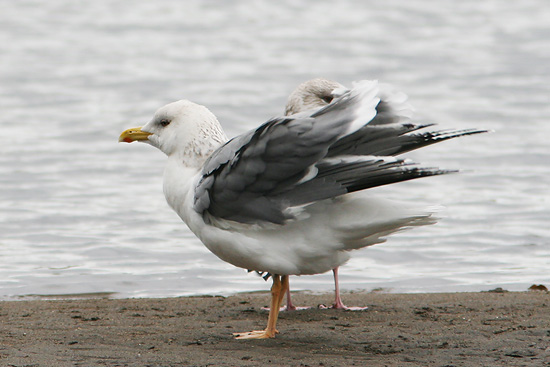
T3 again with a very typical non-breeding L.vegae in the back
Another taimyrensis individual, T4, appeared next to T3. When look closely at T3's upper mandible, I can actually see a faint blackish spot, but it only appears on the left side of the mandible. T4 lacks all kinds of blackish marks on both mandibles. The brownish marks on its nape look more like spots rather than streaks. It has yellower legs than T3 and both of its P10 are still growing, unlike any other taimyrensis individual on that day.
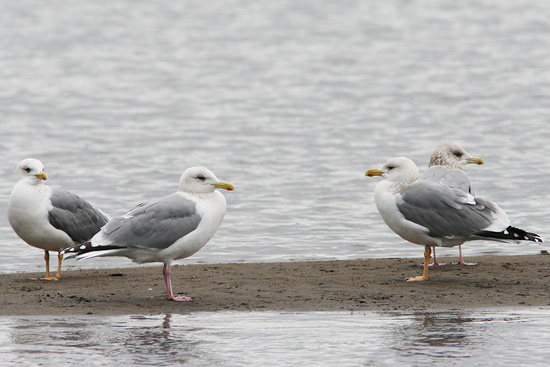
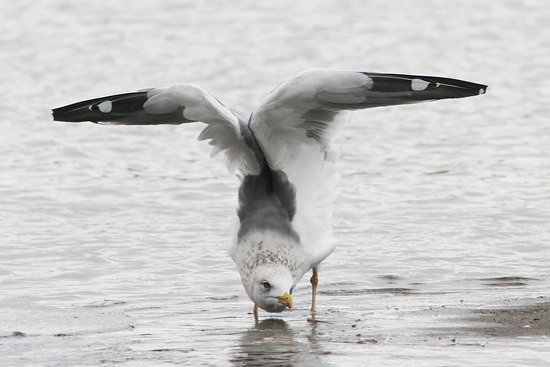 T4 showing its growing P10s
T4 showing its growing P10s
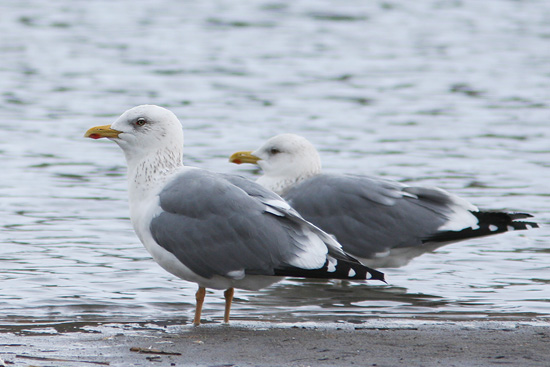 T4(in front) with T3(in the background)
T4(in front) with T3(in the background)

T3 showing its upperwing; note 7 black-marked primaries(to P4), very small mirror on P9
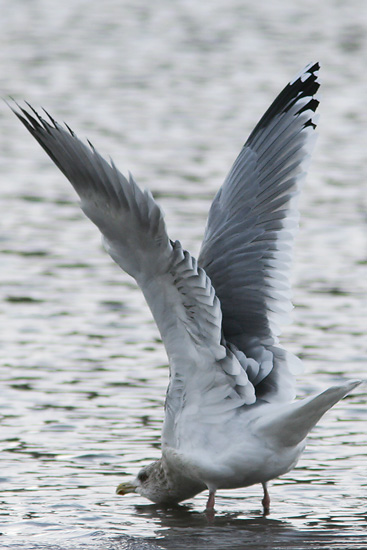
Typical L.vegae has less black on primaries, usually from P10-P5 with larger mirrors
Click on the image to view full size
A wider view with T2 being very outstanding; the one with the brightest orange legs!








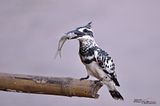


.jpg)

2 comments:
Interesting stuff, I see some of those 'taimyrensis' types every winter and every year 1 or 2 Thayers Gulls arrive and stay on the same stretch of my local river........
Still looking for Thayer's here!
IMO the 'taimyrensis' seems to be more common southward, while others like Thayer's only restricted to places above Honshuu.
Post a Comment